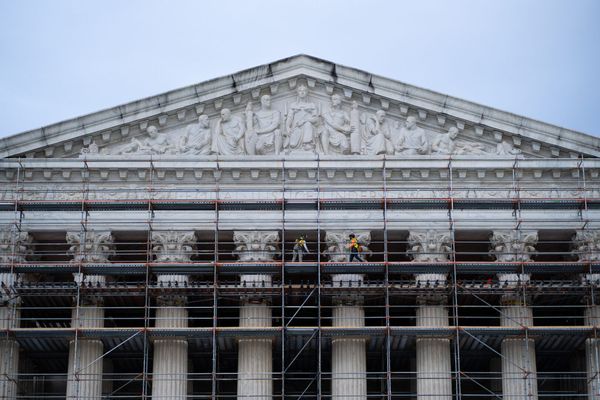The Reserve Bank's deputy governor has offered a detailed insight into the process that goes into the RBA's interest rate decision every month, while the latest board minutes revealed this month's rate decision was "finely balanced".
Speaking at the Australian Finance Industry Association annual conference, Michele Bullock revealed the economic groundwork and discussions that take place before the monthly board meetings.
She also attempted to put to rest any suggestions, made by some economic commentators but few mortgage borrowers, that the RBA had not been aggressive enough in raising interest rates.
Ms Bullock said the RBA meets more frequently than many other central banks.
"The Reserve Bank board is making monetary policy decisions 11 times a year so it is discussing regularly the evidence on the economy and has more flexibility on the size and timing of rate increases," she argued.
"The incremental change in the policy rate at recent meetings has been smaller than some other major central banks. However, our policy rate trajectory has been as steep, or steeper, than other central banks."
As illustrated in the graph, the RBA has had some ground to make up, having been one of the last major developed economy central banks to start lifting interest rates.
Ms Bullock emphasises that the Reserve Bank's board remained "determined to do what is necessary to return inflation to target", which is 2-3 per cent, down from a headline rate of 6.1 per cent currently.
"The board expects to increase interest rates further over coming months. But the pace and timing will be determined by the economic data."
Decision to slow rate rises was 'finely balanced'
Minutes from the RBA's most recent board meeting, also released this morning, show that the decision to slow rate increases from the half-a-percentage-point levels of the previous four months was "finely balanced".
"A smaller increase than that agreed at preceding meetings was warranted given that the cash rate had been increased substantially in a short period of time and the full effect of that increase lay ahead," the minutes noted.
There were concerns expressed that a smaller rate increase might make people conclude that the RBA thought its inflation fighting task was almost done.
"If the board were to reduce the size of the rate increase, it would be the first to do so among advanced economies," the minutes outlined.
"This might in turn prompt an unhelpful reaction in inflation expectations and financial markets, if the community came to question the board's resolve to reduce inflation."
However, caution over the reaction of heavily indebted Australian households to the rapid increase in interest rates over the previous five months won out.
"While consumption had so far held up, monetary policy operated with a lag and there was a risk that household spending might adjust by more than expected," the board members noted.
"Higher interest rates, alongside higher inflation, were putting pressure on household budgets and consumer confidence had fallen.
"The full effects of higher interest rates were yet to be felt in mortgage payments and the increases in the cash rate were close to the interest rate buffer applied when many current borrowers took out their loans."
In the end, the board decided it was better to risk an increase in inflation expectations than to find out later that it had stomped too hard on the economic brakes.
"In an uncertain environment, there was an argument to slow the adjustment of policy for a time to assess the effects of the significant increases in interest rates to date and the evolving economic outlook," board members concluded.
RBA's decision making process
Ms Bullock also used her speech to outline how the RBA arrives at its monthly rates decision.
She revealed that a "Monthly Review" is prepared two weeks prior to each meeting, covering current domestic and international economic and financial conditions.
Then follows "a sequence of meetings" at which small groups of staff from the economic and financial markets groups "debate among themselves" and provide views on policy decisions.
Both those teams within the bank, economic and financial markets, then hold group-wide meetings attended by the RBA governor and deputy governor, where staff make presentations before a discussion of monetary policy.
"Lead-off speakers are sometimes scheduled to make cases for different policy options," Ms Bullock explained.
"Staff are encouraged to offer their views on the recommendation to the board.
"For example, in most recent months, this has included views on the size and timing of interest rate increases; in the past couple of years, it included views on the use of unconventional monetary policy tools, their size and when it would be appropriate to adjust or cease them."
A week before the board meeting, the Policy Discussion Group is held, chaired by the governor and attended by many of the RBA's senior executives.
It starts with a discussion around the papers on economic and financial market conditions, before debating what recommendations should be made to the board regarding interest rates and other monetary policies.
"There is typically very open discussion at this point," observed Ms Bullock.
"There is never any shortage of views and there are often notable differences of opinion.
"The governor encourages debate and actively calls for contrary views. There is also discussion about the communication challenges associated with particular policy options."
It is only after this meeting that the assistant governor (economic), currently Luci Ellis, finalises the "Monetary Policy" paper sent out to the board members ahead of the meeting. Board members also get a range of other background papers.
Dr Ellis and the assistant governor (financial markets) make presentations to the board members when they turn up for their meeting at 9am on the first Tuesday of every month (except January), usually at the RBA headquarters in Sydney.
"The board members are active in this discussion – they ask a lot of questions, not only to understand the issues better but also to challenge the interpretation of the staff," noted Ms Bullock.
"Members also bring their own knowledge of economics, finance and wider commercial experiences to bear."
At this month's meeting, Ms Bullock hinted that the decision to raise rates by 0.25 of a percentage point, rather than half a percentage point, was a close call.
"There was an active discussion both internally and at the board meeting about the appropriate size of the increase," she revealed.
"On the one hand, inflation is high and the labour market is very strong, which indicates a need for interest rates to rise further.
"On the other hand, there has already been a substantial rise in interest rates since May, which, along with price rises, is beginning to put pressure on household budgets. How household spending will respond to this is uncertain.
"The international economic environment has also deteriorated quite sharply.
"For these reasons, the board felt that a smaller increase in October was warranted while it took stock of developments in consumption, wages and the international economy."







